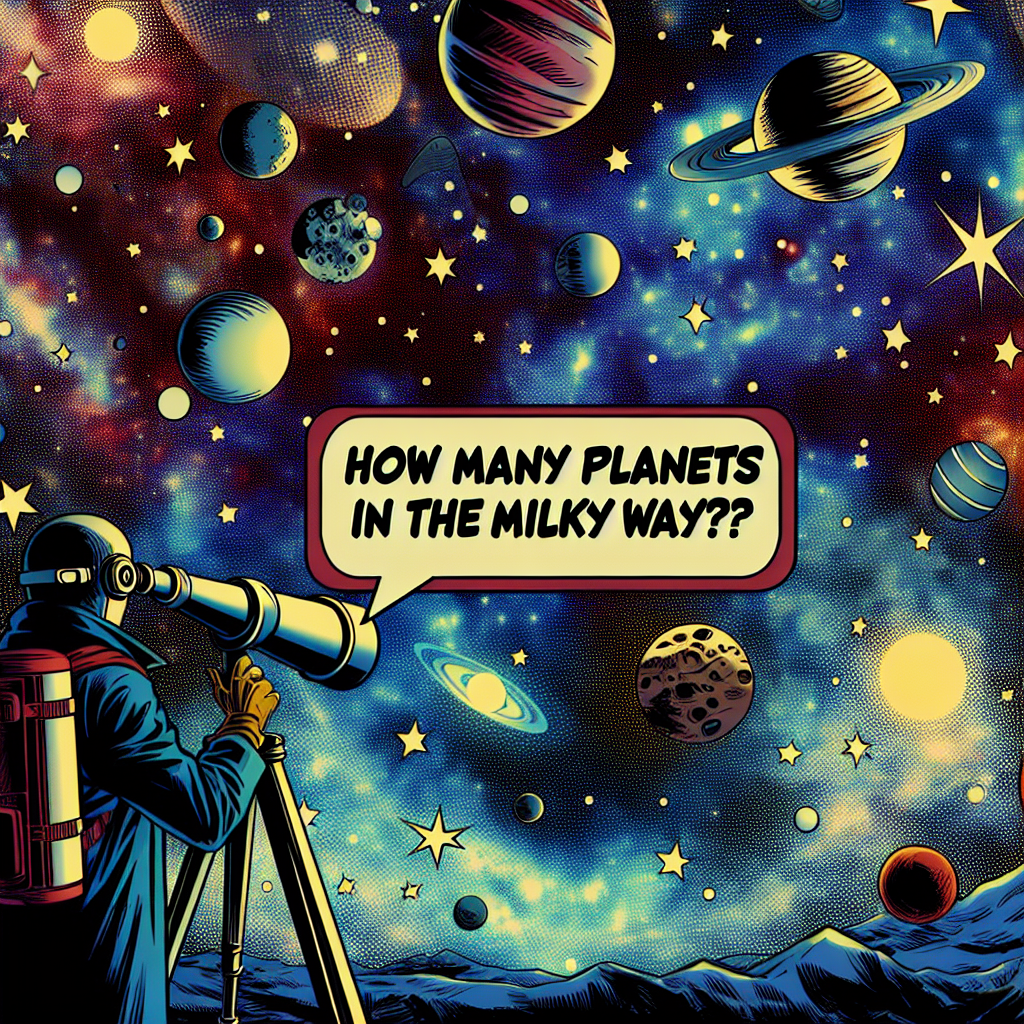The Milky Way, our home galaxy, is a vast and wondrous place, teeming with stars, gas, and dust. Imagine a giant, cosmic pinwheel, rotating lazily in the dark expanse of space. This pinwheel is made up of hundreds of billions of stars, each one a massive ball of hot, glowing gas. Some of these stars are like our sun, while others are much larger or smaller, hotter or cooler.
Now, imagine that each of these stars is a potential planetary nursery, capable of spawning its own system of planets. Just as our sun has eight planets, many other stars likely have their own retinue of worlds orbiting around them. But how many planets are we talking about? To put it into perspective, consider that the Milky Way is estimated to contain between 200 and 400 billion stars. That's a 2 or 4 followed by 11 zeros!
Not all of these stars are likely to have planets, of course. Some might be too small or too large, too hot or too cold, or they might be binary or multiple star systems that are inhospitable to planetary formation. But even if only a small fraction of these stars have planets, the numbers are still staggering. Let's assume, for the sake of argument, that one in ten stars has a planetary system. That would put the number of planetary systems in the Milky Way at around 20 to 40 billion.
But here's the catch: these planetary systems can have multiple planets. Our own solar system, for example, has eight planets, plus various dwarf planets, asteroids, and other smaller objects. Other systems might have only one or two planets, while others might have dozens or even hundreds. The possibilities are endless, and the numbers start to add up quickly. If we assume an average of five planets per system (a conservative estimate), the total number of planets in the Milky Way would be around 100 to 200 billion.
To put this into perspective, consider that the number of grains of sand on all the beaches on Earth is estimated to be around 7.5 x 10^18, or 7,500,000,000,000,000,000. The number of planets in the Milky Way could be as much as 20 to 30 times this number.
Now, you might be wondering how we can even begin to estimate these numbers. After all, we've only explored a tiny fraction of the Milky Way, and most of the stars we've studied are relatively close to us. The answer lies in the power of mathematics and astronomy. By studying the properties of stars and the conditions under which planets form, we can make educated guesses about the likelihood of planetary systems existing around other stars. We can also use observations of exoplanets – planets outside our own solar system – to inform our estimates.
For example, NASA's Kepler space telescope has discovered thousands of exoplanets orbiting distant stars. While these planets are often very different from those in our own solar system, they provide valuable clues about the diversity of planetary systems and the frequency of planetary formation. Other telescopes, like the Hubble Space Telescope and the Atacama Large Millimeter/submillimeter Array (ALMA), have also made significant contributions to our understanding of planetary formation and the properties of exoplanets.
But even with all this data, there's still much we don't know. Many exoplanets are too small or too distant to detect, and we may be missing entire categories of planetary systems. This is where future missions, like the James Webb Space Telescope and the Transiting Exoplanet Survey Satellite (TESS), come in. These telescopes will help us study the properties of exoplanet atmospheres, search for signs of life, and probe the conditions under which planets form.
In the end, the exact number of planets in the Milky Way is less important than the fact that we're likely to be surrounded by hundreds of billions of planetary systems, each with its own unique characteristics and possibilities. It's a mind-boggling thought, and one that should inspire us to continue exploring, discovering, and pushing the boundaries of human knowledge.
Here are some key takeaways to summarize our discussion:
- The Milky Way contains between 200 and 400 billion stars.
- Assuming one in ten stars has a planetary system, there could be around 20 to 40 billion planetary systems in the Milky Way.
- With an average of five planets per system, the total number of planets could be around 100 to 200 billion.
- This number could be even higher, considering the vastness of the galaxy and the diversity of planetary systems.
- Our current estimates are informed by observations of exoplanets and the properties of stars.
- Future missions will help us learn more about exoplanet atmospheres, search for signs of life, and probe the conditions under which planets form.
The search for life beyond Earth is an ongoing and vibrant area of research, and the possibility of finding life elsewhere in the Milky Way is a tantalizing one. As we continue to explore the galaxy and study the properties of exoplanets, we may yet uncover evidence of life beyond our own planet. The universe is full of mysteries, and the search for life is one of the most compelling and intriguing of all.

Popular Space Questions
Find answers to the trending space questions being asked by our community on social media.
- How many galaxies are there in the universe?
- How far is Pluto from Earth?
- How many planets are in the Milky Way?
- What would happen if a rogue planet entered our solar system?
- How many planets are in our solar system?
- How big is the Earth?
- What are the planets in order?
- How big is the universe?
- What if we found a way to manipulate gravity?
- What would happen if a pulsar's beam hit Earth?